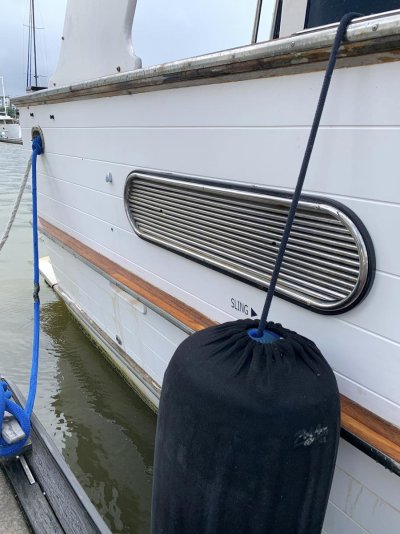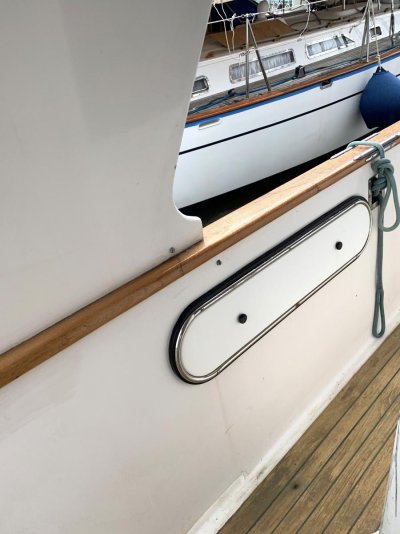Well, very nice inheritance I must say!
You may already know all this (if so forgive me!), but in case you don't:
Nordhavn's are displacement hull designs, whereas the OA Mk 1 is a semi-displacement hull design. Nordy's have deeper draft & heavier construction in addition to some ballast. That gives them great static stability, but those factors and their hull shape makes them slow. They can't get over hull speed. But they will have better fuel efficiency and for some purposes, such as crossing oceans, they excel.
The Mk 1's, like other semi-displacement hull forms, can exceed hull speed given enough HP. Even modest use of the installed HP will be 1 or 2 kn faster than a displacement hull form without consuming prodigious quantities of fuel. They are less fuel efficient than both displacement hulls and fast planing hulls, but the compromises give a boat that is great for coastal cruising and typically has a lot of home comforts. Hence their popularity despite some shortcomings compared to the more specialised hull forms.
It won't be feasible to add ballast to a Mk 1 to mimic a Nordhavn. It would be like taking a sports sedan and converting it to a camper van. You might well succeed to some degree, but the cost in time and money won't make sense. And at the end of it you definitely would not have a sports sedan anymore, and likely will have poor camper as well.
In terms of cost to make a Mk 1 seaworthy for an ocean crossing, plus fuel etc for the crossing, it will likely be cheaper to ship it most of the way, or at least past long stretches of ocean or places prone to piracy. In your case some of the work has been done already, but doors and windows are huge vulnerabilities in addition to the ER vents. Sorting out those issues, in a way that does not butcher the boat, wont be cheap. Yes, you could though-bolt 12-15mm perspex over the windows and it might be enough, but then there is some repair work to do once it is removed at the end of the crossing which could be challenging to look decent. Of course by using Pilot Charts and travelling at the right time of the year, and with a bit of luck, you may very well be able to get the boat ready with relatively minor modification and cross without drama. I was intending to do that back in 2012 and started refitting the boat to be fit for purpose. But then shipping rates halved and it became the prudent option to ship.
These days I regard my boat as an outstanding vessel for long distance coastal cruising. It can handle more in terms of sea state than I am comfortable with. Crew sea sickness and fatigue can lead to adverse consequences from poor decisions, even if the vessel is fine. At this point I don't think I would ever cross an ocean in a semi-displacement hull because I don't have the tolerance for extended periods of being uncomfortable and just not enjoying it.
Having said all that, I hope you keep us posted on your research and plans. You might prove me wrong, and If so I'd be delighted to welcome you ashore at the end of a crossing!


